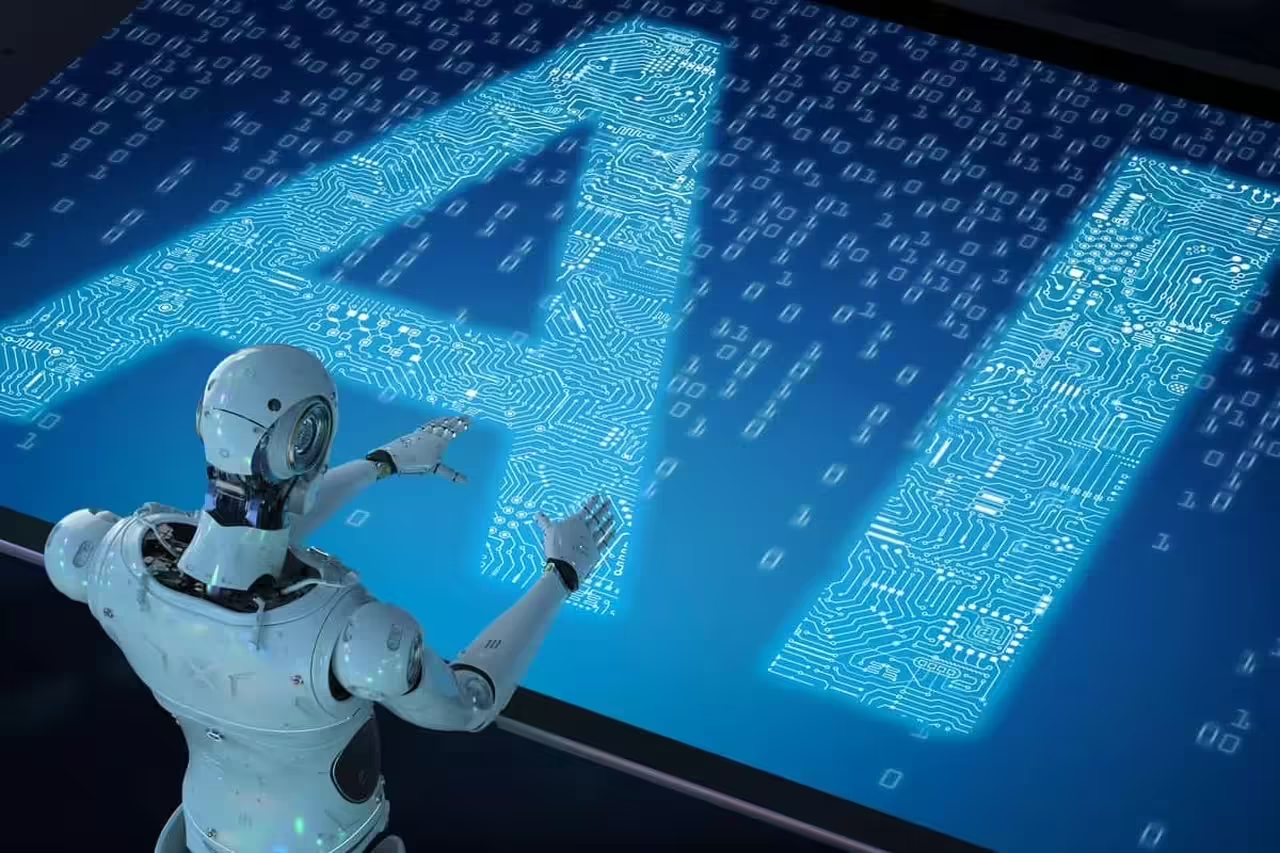
Artificial intelligence (AI) has been one of the most revolutionary technologies of our time. It has been used to automate processes, improve efficiency and make life easier for people around the world. However, it has also raised concerns and has been the subject of debate around the dangers it may pose.
AI poses a threat because it is a constantly evolving technology and, as it becomes more advanced, it can also become more autonomous and unpredictable. As AI systems become more complex, there is an increased risk that they will deviate from their original goals and become unpredictable and even dangerous.
The main concern with AI is that, as it becomes more advanced, it can make decisions that are not in line with the interests of humans. This is of particular concern in areas such as defense and security, where wrong decisions can have serious and even catastrophic consequences.
In addition, AI can be used to automate jobs that were previously performed by humans. While this can lead to greater efficiency and cost reduction, it can also have a negative impact on the economy and the lives of people who lose their jobs.
Another major concern is bias in AI. AI learns from data and algorithms, and if those data and algorithms contain bias, the AI will reflect that as well. This can lead to discrimination and exclusion in areas such as hiring, housing, and access to financial services.
AI can also be used for mass surveillance and social control. With mass data collection and the use of AI algorithms, companies and governments can learn intimate details of people’s lives, which can have an intimidating effect and limit freedom of expression and privacy.
The trust gap: how can AI fail and lose the trust of humans?
One of the biggest challenges facing AI is the trust gap. As AI becomes more advanced and autonomous, it also becomes more difficult for humans to understand how decisions are being made and why they are being made. When humans do not fully understand the process behind AI decision making, a trust gap can emerge that can be difficult to overcome.
The trust gap in AI can arise for several reasons. First, AI can have bugs and errors. As more complex algorithms are used, AI can make incorrect or biased decisions. This can have serious consequences in areas such as healthcare, where AI is used to aid in the diagnosis and treatment of diseases.
Another factor that can contribute to the trust gap in AI is the lack of transparency. When it is not fully understood how AI is being used and how decisions are being made, it can be difficult for humans to trust it. Lack of transparency can also make it more difficult for humans to detect and correct AI errors.
The trust gap in AI may be exacerbated by a lack of accountability. As AI becomes more autonomous, it can be difficult to determine who is responsible for the decisions being made. This can make it difficult for humans to trust AI and can have negative consequences for the acceptance of the technology.
To overcome the trust gap in AI, it is important to address these issues. First, AI must be designed to be more transparent and understandable to humans. This may involve including explanations of how decisions are being made and how data is being used. It is also important to develop AI algorithms that are fairer and less prone to error and bias.
Clear accountability for AI decision making must be established. This may involve creating regulatory frameworks that establish who is responsible in the event of AI errors or failures.
Bias in AI: How can biases be built into AI algorithms?
Bias in AI refers to biases built into AI algorithms, which can lead to discriminatory decisions. Although AI is considered a neutral and unbiased tool, it can be influenced by the opinions, values, and biases of those who program it.
There are several factors that can contribute to bias in AI. One of the most important is the quality of the data used to train the AI. If the data used to train the AI is biased, then the AI will also be biased. For example, if a data set is used that is unbalanced in terms of gender or race, then the AI may also be unbalanced in its decisions.
Another factor that can contribute to bias in AI is the lack of diversity in the team programming it. If the team developing the AI is homogeneous in terms of gender, race, and cultural background, then unconscious biases are more likely to be reflected in the AI programming.
Bias in AI can have serious and discriminatory consequences in areas such as criminal justice, personnel selection, and medical care. For example, if AI is biased in terms of gender, there may be bias in the selection of candidates for certain jobs, which may exclude certain groups of people. If AI is biased in terms of race, there may be bias in law enforcement, which can have disastrous consequences for minority communities.
To address bias in AI, it is important for developers of the technology to be aware of the possibility of bias and take steps to minimize it. This may include including more diverse data and implementing rigorous testing to detect and correct for any bias in AI. It is also important to encourage diversity in the team programming the AI to ensure that different perspectives are considered and unconscious biases are avoided.
The danger of superintelligence: What happens if AI becomes smarter than humans?
Superintelligence refers to the hypothesis that at some point in the future, AI could reach a level of intelligence that surpasses that of humans. This idea may sound like science fiction, but many experts in the field of AI believe it is a realistic possibility in the future.
The danger of superintelligence lies in the fact that a superintelligent AI could be capable of making decisions that could be dangerous to humans. As AI becomes more advanced, it is possible that it could begin to make decisions and take actions that are not in line with human values and priorities.
A superintelligent AI could be capable of rapid self-improvement, meaning that it could quickly outpace the ability of humans to control it. This could lead to dangerous situations in which the AI makes decisions that are detrimental to humans, even if it does not intend to.
Also, a superintelligent AI could be able to manipulate and deceive humans, which could have dangerous consequences. If a superintelligent AI were able to trick humans into doing something that goes against their interests or values, it could have catastrophic consequences.
It is important to keep in mind that superintelligence is not necessarily a bad thing in itself. If developed responsibly and used for the common good, superintelligent AI could have enormous benefits for humanity. For example, it could help solve some of the biggest challenges facing humanity, such as climate change or disease.
There is a need to recognize the potential danger of superintelligence and work to minimize it. This may include implementing safety measures to ensure that AI does not have the ability to make dangerous decisions, as well as developing ethical systems to ensure that AI takes into account human values and priorities.
The implications of automation: How is AI changing the employment landscape?
Automation, driven by AI, is transforming the way we work and, in some cases, eliminating traditional jobs. According to a McKinsey report, automation is expected to affect at least 50% of work activities, representing a significant impact on the global economy.
In some cases, automation has improved efficiency and enabled companies to increase production and reduce costs. AI has enabled the automation of repetitive tasks, which has improved accuracy and quality of work, and has freed workers to focus on more complex and higher value-added tasks.
However, in other cases, automation has led to job losses and increased competition for remaining jobs. For example, automation in manufacturing has led to the elimination of mass production jobs and the creation of technology and supply chain jobs.
Automation has undoubtedly also affected white-collar workers, with the automation of administrative and clerical tasks. This has led to increased pressure for workers to acquire additional skills and knowledge to remain competitive in an ever-changing labor market.
It is also important to consider the impact of automation on economic inequality. Automation can increase productivity and reduce costs, but it can also increase the gap between highly skilled workers and less skilled workers. As more low-paying jobs are automated, workers who do not have the skills needed to work in automated jobs may have difficulty finding work and earning a decent wage.
It is important to note that automation is not a linear, uniform process. The impact of AI on the employment landscape varies by industry and geographic region. Automation can also create new jobs and job opportunities that did not exist before.
The dark side of surveillance: how is AI being used for mass surveillance and social control?
Mass surveillance refers to the collection of data on citizens without their consent or knowledge. Governments and companies have used a variety of surveillance tools, from security cameras to data collection from mobile devices and social networks.
AI has been used to analyze and process this data, leading to an increased ability to monitor and surveil citizens. For example, some governments have used AI to collect real-time surveillance data, allowing them to monitor and track people in public places. AI has also been used to analyze large amounts of social network data, allowing governments and companies to create detailed profiles of individuals and track their online behavior.
Mass surveillance raises significant privacy and civil rights concerns. Citizens can be monitored and controlled without their knowledge or consent, violating their basic rights to privacy and freedom. In addition, AI can be used to make automatic decisions about individuals, raising concerns about discrimination and fairness.
Another troubling aspect of AI in mass surveillance is its ability to perpetuate and amplify bias and discrimination. If the data used to train AI algorithms contains bias, the AI can perpetuate and amplify this bias in its decisions. This can lead to discrimination in surveillance targeting and decision making based on the data collected.







